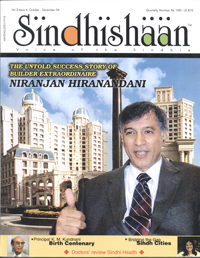COMPLETE HEALTH CHECKUP
OF THE SINDHI COMMUNITY
By Arun and Sabita Babani
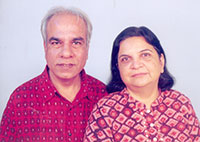
Sindhishaan has done it again! This time it is a pioneering research into the community’s health. Conducted with the help of 12 top Sindhi medical practitioners, specializing in different parts of the anatomy. We have path-breaking insights into the Sindhi mind, body and spirit. This complete Sindhi health checkup, has covered Sindhi eyes, Sindhi psyche, Sindhi ear-nose-throat, Sindhi heart, Sindhi blood, Sindhi skin, Sindhi teeth, Sindhi bones, Sindhi abdomen, Sindhi child-birth practices, and a host of other Sindhi specific features, such as, Sindhis as patients, Sindhis as followers of alternate healing techniques like Ayurveda and Homeopathy.
We asked each one of the 12 specialists to examine the Sindhi mind, body and spirit, with a focus on whether there is anything typical or unique regarding Sindhi health issues, which can safely be called ‘Simply Sindhi’. In this context Thalassaemia emerged as the only Sindhi specific disease with over 140 affected Sindhi children in Ulhasnagar alone. Diabetes and Obesity came a close second, with Blood pressure and Cardiac problems following as major Sindhi afflictions.
However, on a positive note, Sindhi lifespan seems to have gone up. Earlier the lifespan of a Sindhi was around 60-65 years, whereas presently it is around 75-80 years, which indicates that more elderly Sindhis are alive and kicking.
This study also came up with some stunning facts. Like “When it comes to pregnancy and childbirth, Sindhi women are ignorant” Or, “Sindhis usually go doctor-shopping and checkout many opinions, by consulting various doctors before deciding on any course of action.” Then there were the compliments showered on the community by many experts, such as “Sindhis make excellent patients, they comply with every rule in the medical book.” As also a few doctors found Sindhi patients to be hard line bargainers, or even using a doctor’s name as a brand name, complete with prestige value.
All this and much more lies ahead in the conversations with these brilliant Sindhi minds of medicine. In conclusion, basically, as far as Sindhi health is concerned two issues became very clear at the end of this exercise: one, Sindhi community as a whole is going through, what in medical terminology is known as LIFESTYLE PROBLEMS. You’ll learn more about it in the following pages, as you go through this feature, as physician after physician has insisted on this rather easy to see truth about our community. Two, SINDHI DIET as a whole is of a problematic nature. Together, these two facts explain most of the Sindhi specific illnesses and health problems.
To sum up, let us give you a word that a Sindhi lives by, the word that spells magic for a Sindhi, a word that also spells madness for a Sindhi. The word that defines Sindhi lifestyle is the word that a Sindhi uses more than any other Sindhi word; that word explains the power as well the poverty of being a Sindhi; that word is KHAPPE, the word that can easily serve as a perfect nickname for the Sindhi community. On the one hand, KHAPPE has afforded a global life style and all the good things of life to the community, but on the other hand, KHAPPE has been responsible for major illnesses and has proved to be a health hazard for the community.
SINDHIS…THE HAI GODHA PEOPLE
DR. T. V. VASWANI (Physician, Surgeon, Consulting Acupuncturist)
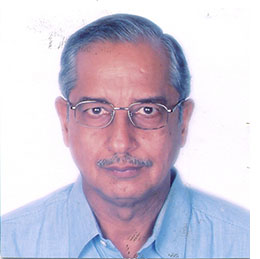 The main diseases found among the Sindhi community are Obesity, Osteopeorosis, G6 PD Deficiency, Ischaemic heart diseases and Thalassaemia minor (which is often mistaken in the initial stages for anemia), and common problems of indigestion such as burping, gastric problems, feelings of laziness, diabetes, schemic heart diseases and monjh or gabrahat. All these are in some way or the other related to overweight, which is quite high among the Sindhis. One of the major factors contributing to this is the food habits. Sindhis by and large consume heavy food, do very little exercise, and love a lavish life style. Lack of exercise is what leads to osteoporosis and Femur bone fractures in middle age. They are basically religious minded and are fond of ‘kada prasad’ which is rich in ghee and sugar, followed by papad, high in salt. Tikkis and pakodas are a regular with most of the Sindhis.Another important aspect is related especially to the Sindhi NRI clan, who come to India basically to enjoy, resulting in partying every night, consuming alcohol, losing out on sleep and ultimately landing at the doctor’s clinic with stress related ailments such as backaches, high BP, and gastrointestinal diseases. This is true especially of the Sindhwarkis and Bhaibands who work really hard out there and simply wish to unwind here. However, majority of the Sindhis that I know suffer from high level of anxiety since they are always in a hurry to achieve more in a relatively short span…they are the Hai Goda people.
The main diseases found among the Sindhi community are Obesity, Osteopeorosis, G6 PD Deficiency, Ischaemic heart diseases and Thalassaemia minor (which is often mistaken in the initial stages for anemia), and common problems of indigestion such as burping, gastric problems, feelings of laziness, diabetes, schemic heart diseases and monjh or gabrahat. All these are in some way or the other related to overweight, which is quite high among the Sindhis. One of the major factors contributing to this is the food habits. Sindhis by and large consume heavy food, do very little exercise, and love a lavish life style. Lack of exercise is what leads to osteoporosis and Femur bone fractures in middle age. They are basically religious minded and are fond of ‘kada prasad’ which is rich in ghee and sugar, followed by papad, high in salt. Tikkis and pakodas are a regular with most of the Sindhis.Another important aspect is related especially to the Sindhi NRI clan, who come to India basically to enjoy, resulting in partying every night, consuming alcohol, losing out on sleep and ultimately landing at the doctor’s clinic with stress related ailments such as backaches, high BP, and gastrointestinal diseases. This is true especially of the Sindhwarkis and Bhaibands who work really hard out there and simply wish to unwind here. However, majority of the Sindhis that I know suffer from high level of anxiety since they are always in a hurry to achieve more in a relatively short span…they are the Hai Goda people.
Of course as a community the Sindhis are quite Dharmic. They have established the best hospitals today. Then there are those who are always in doubt about what the doctor says. They are the ones who have a ‘chalta hai’attitude, and visit the physician only when the illness becomes acute. In some cases though there are Sindhis who are known to even bargain with the doctor. Finally, as patients 50% Sindhis comply and the rest do not unless the matter becomes serious.
NO SURGERY PLEASE…. WE ARE SINDHIS.
DR. JAWAHAR PANJWANI (Consultant Orthopaedic Surgeon)
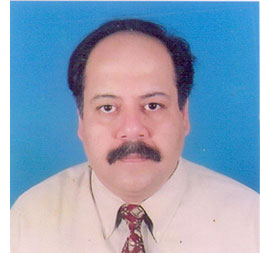 Sindhis are a race from Afghanistan, Peshawar and so on, almost like the Pathans, hence they have a good bone quality, with most of them being stocky built and strong. But, an important factor in the physical health is that of dietary habits. On the whole, Sindhis consume a wholesome diet like wheat, jowar, bajra, which are high in proteins, along with all types of dals. They get their carbohydrates from their daily intake of good nutritious food. Along with this they are also fond of non-vegetarian food like red meat, chicken, fish, prawns, plus milk, sweets, cream and paneer etc. Hence the most common ailments in Sindhi women especially are joint pains of the knees and lower back, Rheumatism, diabetes, high uric acid level, cramps in the night (Giddiri) etc. In the younger generation there in an increase in the consumption of red wine which is often the reason for Gout (increase of Uric acid).
Sindhis are a race from Afghanistan, Peshawar and so on, almost like the Pathans, hence they have a good bone quality, with most of them being stocky built and strong. But, an important factor in the physical health is that of dietary habits. On the whole, Sindhis consume a wholesome diet like wheat, jowar, bajra, which are high in proteins, along with all types of dals. They get their carbohydrates from their daily intake of good nutritious food. Along with this they are also fond of non-vegetarian food like red meat, chicken, fish, prawns, plus milk, sweets, cream and paneer etc. Hence the most common ailments in Sindhi women especially are joint pains of the knees and lower back, Rheumatism, diabetes, high uric acid level, cramps in the night (Giddiri) etc. In the younger generation there in an increase in the consumption of red wine which is often the reason for Gout (increase of Uric acid).
Secondly, being a business class, they have a sedentary life style combined with lack of exercise, thereby increasing the risk of diseases of a metabolic nature
As patients it is observed that Sindhis are extremely scared of surgery, perhaps they are afraid of post-operational complications. They are happy with medications for a prolonged period of time, but will not go in for surgery even if it going to solve their problems. Hence, they check and crosscheck with various doctors, collecting multiple opinions. They are ready to pop pills in the morning and evening, but are not prepared to change their life style or work hard for their good health. Above all, Sindhis are a good community to treat, and I have been happy treating them for almost 12 years now.
YEH SINDHI DIL MAANGE MORE AND MORE….
DR. C. V. VANJANI (Consultant Cardiologist)
The Heart is a remarkable organ. It does not take rest even for a second, in health, in disease, or during sleep. It continues to work even if itself is affected with disease, e.g.during a heart attack. It is understandable then that this marvelous organ requires equal degree of care and maintenance for proper functioning. There are some risk factors which predispose individuals to heart disease, like smoking, tobacco, high cholestrol, sedentary life style, stress, over weight and so on. All these factors are applicable to the general population alike, but there are some peculiar life style habits observed in Sindhis that make them prone to illnesses of the heart.
Most of the Sindhis today are over weight, and few are even obese (minimum 30% above their ideal weight). There are several factors contributing to this trend, such as: -
1. Food habits : Sindhi diet consists of fried foods, tikkis ,pakodas, mithais,dry fruits, non-vegetarian food. Parties are frequent among the community members where there is red wine, liquor, snacks that are fried, like wafers, nuts, samosas, kebabs, organ meats, etc. Very few are interested in eating salads. Drinking in moderation is fine, but beyond the permitted level it is certainly harmful. For instance, it is advisable to consume 50ml red wine, or 330ml beer or 11/2 peg of whisky. In fact, red wine in limited quantity is known to keep the blood thin and even increase HDL, good cholesterol in the body. In fact studies have indicated that walnuts and almonds are good for health in moderate quantity as they contain certain oils that reduce the cholesterol level in the body.
2. Life style problems : basically high society Sindhi families are going through this high stress, high competition syndrome, which in simple words simply means running after wealth, and comparing oneself with others in the community, or within the families itself. It is based on a false sense of superiority where ladies exhibit designer names of clothes and jewellery. It is a showmanship of Sindhis, which costs them dearly on the health front. Even within the Sindhi business families often the time comes for property divisions, and in countless cases such disputes related to money produce a lot of bad blood and take their toll on the health of the male members in the form of Blood Pressure leading to Heart attacks. Another problem with Sindhi business houses is their loosely defined working hours. Sindhis are known to slog to earn their money, but they are also known to disregard discipline of time. NRI Sindhwarkis particularly, keep going on in their shops and offices till late in the evening and night, unlike in China and Japan where the working hours are more decent. After all this heavy work the Sindhis are known to come home, take heavy drinks and sleep.
3. Lack of Exercise : Though the Sindhis are predisposed to being over weight, much can be done to achieve and maintain an ideal body weight. A simple dedicated walk of just 20 to 30 minutes daily is beneficial for health. Women working in the kitchen or going marketing do not burn as many calories as while walking. Lack of exercise in both the sexes is what leads to over weight, and subsequently to Diabetes and Blood Pressure etc.
4. Smoking : This seems to have increased of late, especially in case of women who socialize a lot, such as models, air hostesses and so on. Drinking, partying, smoking, late nights, is what causes them to miss out on morning exercises, and low level of energy expenditure
As patients Sindhis have a few peculiar characteristics: - When they are told about a disease, the first reaction is that of denial. They won’t accept the doctor’s diagnosis, and argue that ‘how can it occur to me? I have no symptoms, no family history etc’, this leads them to take many opinions and go Doctor-shopping, since they have money to spend. Sindhis are also known to give many excuses for not changing their life style. Basically most of them are not so disciplined and follow a flamboyant life style. Ironically when it comes to a major serious illness they will ask for the’ best’, displaying their wealth and one-upmanship. Even to afford the services of the best surgeon is a ‘Style’ statement for them.
Finally, the prevention of Heart disease has to start in childhood. The importance of beginning prevention in early life has to be emphasized by physicians who are confronted with a daily problem of mounting burden of Heart diseases. Lifestyles and behaviours that influence cardiovascular risk factors are learned in childhood. Healthy lifestyles have to be adopted early because they are critical to modulating risk factors in adult life. Cardiologists and primary care physicians have a tremendous opportunity to guide and propagate prevention programs for the young, who otherwise are destined to be our next generation of cardiac patients.
SINDHI CHILD BEARING PRACTICES CHANGING….
DR. DEVI CHANDIRAMANI (Obstetrician & Gynaecologist)
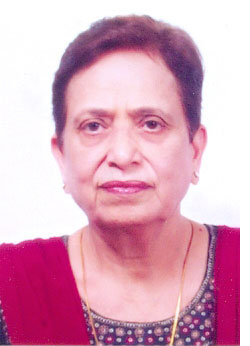 In the last four decades of practicing in this field, with maximum number of Sindhi women as patients, it has been observed that Sindhi ladies tend to put on more weight during pregnancy. One of the major factors for this is the wrong notion in their minds that they have to ‘eat for two’. However, it is more important what the mother eats, like high fibre, proteins, carbohydrates, but definitely less of fat. It is also common to see the Sindhi mother-in-law keeping a 5kg. can of pure ghee for her daughter-in-law to consume during pregnancy. Other wrong foods recommended by elderly women are seera, and churee, made of pure ghee. But today the younger generation of Sindhis is an aware and figure conscious lot, who eat right in order to get back in shape quickly. It all depends upon one’s personal determination. Another common wrong notion that is passed down from the elders is avoidance of drinking water during delivery as it leads to a paunch. But this is not true; in fact absence of water leads to formation of stones in the uterus, and difficulty in the formation of breast milk. Still more strange is the belief that the mother should consume milk and ghee during delivery as it helps in the baby slipping out easily. Actually there is no connection between the birth canal and the intestines; so one should actually go light on oil and fats.
In the last four decades of practicing in this field, with maximum number of Sindhi women as patients, it has been observed that Sindhi ladies tend to put on more weight during pregnancy. One of the major factors for this is the wrong notion in their minds that they have to ‘eat for two’. However, it is more important what the mother eats, like high fibre, proteins, carbohydrates, but definitely less of fat. It is also common to see the Sindhi mother-in-law keeping a 5kg. can of pure ghee for her daughter-in-law to consume during pregnancy. Other wrong foods recommended by elderly women are seera, and churee, made of pure ghee. But today the younger generation of Sindhis is an aware and figure conscious lot, who eat right in order to get back in shape quickly. It all depends upon one’s personal determination. Another common wrong notion that is passed down from the elders is avoidance of drinking water during delivery as it leads to a paunch. But this is not true; in fact absence of water leads to formation of stones in the uterus, and difficulty in the formation of breast milk. Still more strange is the belief that the mother should consume milk and ghee during delivery as it helps in the baby slipping out easily. Actually there is no connection between the birth canal and the intestines; so one should actually go light on oil and fats.
One more peculiar characteristic about Sindhi women is their attitude towards middle age problems like menopause disturbances, hot flushes, osteoporosis, fractures, dryness of the vagina and so on; all of which can be definitely treated. They seem to resign to their fate, and not seek any medical aid. In fact it is surprising that a large number of Sindhi women are not aware of the Pap smear test, which is compulsory for every woman above the age of 35 years. Of course, as said earlier, the younger Sindhis have become more knowledgeable and learned about such practices. Finally, I must say that it is a pleasure to associate with this community; they are very loving and friendly, and really bless me from their hearts each time they come to me.
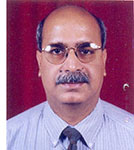 SINDHI EYES SEE WHAT OTHERS SEE
SINDHI EYES SEE WHAT OTHERS SEE
DR. DEEPAK SADARANGANI (Consulting Eye surgeon)
Basically Sindhi eyes are no different from eyes of any other community. The most common eye ailments are Cataracts, and the Sindhi community is equally predisposed to it as any other. Only thing seen is Thalassaemia patients tend to have hemorrhages in the eyes, and sometimes bleeding in the eyes. As far as Refractive errors (vision defects) are concerned, Sindhis have no plus or minus on that one. Hence, basically as said, Sindhi eyes have same common, positive or negative features, as any other Indian community.
SINDHIS TAKING TO HOMEOPATHY…
DR. RAJESH GOKANI (Consultant Homeopath)
Sindhis are fond of sour foods like imli, chutneys, pickles, seyal bread and so on, and hence they are prone to bone diseases like arthritis, osteoporosis etc. By the time they approach 45 to 50 years they develop a peculiar walking gait. I am treating approximately 200 Sindhi females for the same problems.
It is true that Sindhi families are going through life style problems. Back in Karachi, the Sindhis did not have much money, so that kept them in balance. Now, with many Sindhi families becoming well to do, there is a lot of indulgence that spoils their health as well as that of their children. They therefore need to change their life style. Of course many younger families are turning to homeopathy as they find it safe and without any side effects.
THE BROAD MINDED SINDHIS…
DR. SHYAM LULLA (Consulting Psychiatrist)
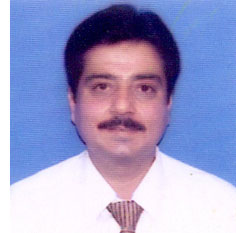 Almost 70% of my patients’ consist of Sindhis, and I find them really fantastic people, so flexible, adaptable, with a capacity to make a solid place for themselves in the world. They are the ‘Survivors’, the ‘Go-getters’. Though the human mind is essentially the same, there are some common characteristics observed among the Sindhis, especially the parents, who tend to pamper their children and give them the best in terms of materialistic comforts. As a result the children are in for a rude adjustment shock when they realize that things are not that easy out in the world. This leads to a set back as they are not as protected outside as in the home. Since Sindhis are essentially a business class, the children are generally handed down readymade cushy positions to handle, which is not without the stress of adjustments, and that takes a few years to get used to, but ultimately the youngsters do pick up.
Almost 70% of my patients’ consist of Sindhis, and I find them really fantastic people, so flexible, adaptable, with a capacity to make a solid place for themselves in the world. They are the ‘Survivors’, the ‘Go-getters’. Though the human mind is essentially the same, there are some common characteristics observed among the Sindhis, especially the parents, who tend to pamper their children and give them the best in terms of materialistic comforts. As a result the children are in for a rude adjustment shock when they realize that things are not that easy out in the world. This leads to a set back as they are not as protected outside as in the home. Since Sindhis are essentially a business class, the children are generally handed down readymade cushy positions to handle, which is not without the stress of adjustments, and that takes a few years to get used to, but ultimately the youngsters do pick up.
There are incidents of depression due to chemical imbalances that are genetically inherited, and which tend to run in some families. Besides there are number of cases of Schizophrenia (lack of reality measurement) mostly among the Sindhi youngsters between the ages of 18-25 years. These patients cannot accept reality, causing them to break into split personalities. They require therapy and a sympathetic hearing. Most of them come out of it.
Being a business class, most of the community is well off, resulting in an attitude of enjoying life, with a few drinks daily being almost the acceptable way of living, making some one who does not drink feel like an outsider. This often leads to morning hangovers, obesity, missing out on exercise and so on. A sedentary life style, food habits generally take a toll on one’s health. Actually it would be advisable that they pay the gym now than pay a doctor later. It is good to balance all the ingredients such as work, vacation, exercise, socializing etc in life because positive health is in our hands, a doctor cannot give it to us.
As a community, the Sindhis are hardly adventurous and lack interest in sports. It is not heard of a Sindhi going away for a few months in the wilderness, as an adventure. On the other hand they certainly have a ‘Hoarding Mentality’ (increasing their bank balance). But on the positive side, here is a community that has strong family ties, good relations within the family and respect for women and elders. A Sindhi man respects his wife and grants her her individuality, and if he can do that he is able to respect those outside his home too. However, the Sindhis have become so broad-minded that they have lost their culture, and have not been able to impart that culture to the younger generation. Our children have become totally cosmopolitised. Finally, over and above all this, I am proud to belong to this wonderful community and I wish to be reborn as a Sindhi!
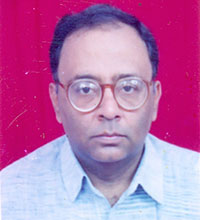 SINDHI TEETHING TROUBLES…
SINDHI TEETHING TROUBLES…
DR. GREESH LILLANEY (Dentist BDS)
One thing that has been noticed over the years of treating Sindhi patients is that around middle age, both Sindhi men and women are struck by Periodontosis, which is a forward migration of the front teeth, both upper and lower. There may be genetic factors in this, but also dietary habits need to be looked into. This is incurable and gradually leads to spaces between the teeth. By and large Sindhis are careless when it comes to oral health care, although the current middle class educated Sindhi families are more conscious and knowledgeable. Since Diabetes among the Sindhis is on the rise alarmingly and this affects the gums and the teeth. This is because Sindhis usually have a sedentary day, sitting at the shop or office, and drinking 10 to 15 cups of tea per day, which affects their teeth. They have no struggle in life, with posh cars, do not burn any calories, and hence along with the general health detoriation their teeth also become loose and fall off.
Another peculiar trait among Sindhis is that their Denture tolerance level is very low. They do not put in any effort and keep complaining about it. So much so that they even advice the dentist about his job! Finally it is the rich and oily food, sweets, ghee, and eating in restaurants that are responsible for their teeth problems.
 DR. ARJAN SIKAYAL (Ayurvedic Vaidya)
DR. ARJAN SIKAYAL (Ayurvedic Vaidya)
Sindhi community is fast becoming ultra modern; they are too keen to migrate to America, Singapore, Hong Kong and Dubai. Today, more than a Sindhi or an Indian, they have become worldly people. That’s why there is a change in their attitude towards health and medical treatments. They are too influenced by western systems.
Sindhis are too fond of travel and food, and hence they are unable to follow the rules of prevention, sleep and relaxation. They eat anywhere, anything and any time.
They need a lot of money. Hence they do not have fixed timings of sleep and relaxation. They are therefore the victims of Diabetes and obesity.
Sindhi women are more sick than Sindhi men. Because they want quick results, they depend on tablets, capsules and injections, so that there are no obstacles in their businesses. But they fall prey to other diseases, which are due to reactions of the medicines.
Sindhis do not have time for Yoga or Exercise, or even simple walk, so Obesity is like their twin sister. They consider inexpensive, easy and simple cures of Ayurveda below their dignity, and so they frequent big doctors and big hospitals for prestige.
SOME SINDHIS, THE CARRIERS OF THALASSAEMIA…
MRS. SAPNA JESWANI (President - We Care trust. Thalassaemia prevention and detection Centre)
Sindhis along with Gujaratis, Lohanas Punjabis and Kutchis are the main carriers of Thalassaemia, which is caused by recessive genes passed down from the parents to the offspring. Common symptoms of this disease are generally vomiting, loss of appetite, paleness and recurring fever. Therefore it is frequently mistaken for anemia, and it is only after a year or two that a correct diagnosis is made through a blood test.. Though the exact reason for this community related disease is not known, one factor that clearly stands out is that Thalassaemia is prevalent mostly in those people who migrated from the belt consisting of London, Dubai, Iran, and Cyprus, around 75 to 80 years ago. They are the people who survived an epidemic of Malaria. But they ended up being carriers of Thalassaemia. That is the reason that a child afflicted with this illness rarely gets malaria. A Thalassaemia person cannot produce Red Blood Cells (RBC), and hence is in need of blood transfusion. This is in case of Thalassaemia Major who may require a bottle every 20 to 25 days, depending upon the nature of the disease. Among the patients that we attend to nearly 17% are Sindhis from Ulhasnagar alone, making them the largest community group.
There is no cure for the disease, except blood transfusion, which is a very costly affair, and the center runs on donations from various sources. But one way of controlling the disease is Counseling of youngsters who are on the verge of getting married, and asking them to go in for a Thalassaemia blood test. This is crucial because it is a silent or dormant disease that has no external symptoms; hence a test reveals it easily. In case any one or both the partners test positive, then it becomes necessary for the woman to undergo a test 8 to 10 weeks after pregnancy to check if the fetus is normal. Should the fetus turn out to be a carrier as well, it is advisable to terminate the pregnancy as soon as possible, for the benefit of both the parents as well as the unborn child, as the average life span of a Thalassaemia patient was around 6-7years, and is now not more that 16 to 17 years. Hence, in such a situation a Gynaecologist plays a very crucial role that should not be taken lightly, and every Sindhi woman who is to be married should be made to undergo this test along with her partner.
SINDHIS ARE BEAUTIFUL PEOPLE.
DR. S. K. PUNSHI (Consultant Dermatologist)
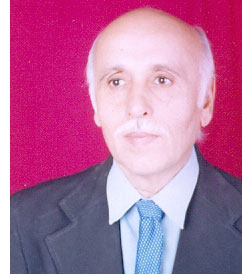 Dermatological disorders are universal, but certain diseases are more prevalent and congenetically predisposed in certain communities as compared to others; e.g.Thalassaemia is more common in Sindhis, Diabetes is common in Jains and Marwaris, and Infantile Cirrhosis is quite common in Agrawal community, etc. Other diseases like Scabies, Pyoderma etc are more prevalent in the lower strata of society, with poor economical conditions, adverse environmental factors, poor nutrition and housing problems. Leprosy was uncommon in Sindh, but now we see cases in the Sindhi community. If you look in retrospect, prickly heat (Miliria) was common in Sindh (now in Pakistan), because of the scorching heat of the sun.
Dermatological disorders are universal, but certain diseases are more prevalent and congenetically predisposed in certain communities as compared to others; e.g.Thalassaemia is more common in Sindhis, Diabetes is common in Jains and Marwaris, and Infantile Cirrhosis is quite common in Agrawal community, etc. Other diseases like Scabies, Pyoderma etc are more prevalent in the lower strata of society, with poor economical conditions, adverse environmental factors, poor nutrition and housing problems. Leprosy was uncommon in Sindh, but now we see cases in the Sindhi community. If you look in retrospect, prickly heat (Miliria) was common in Sindh (now in Pakistan), because of the scorching heat of the sun.
Pyoderma (Boils) were common in the summer season, when people ate a lot of mangoes, and hence had boils on their skins, and they would go to the canals for bathing, after applying Multani Matti. The Sindhi refugee camps were infested with scabies in an epidemic form. Now, due to the improvement in socioeconomic conditions in the Sindhi community there are cases of Diabetes/Hypertension/Heart ailments etc. Today the skin diseases which are prevalent in the Sindhi community are more of Fungus Infections, especially in Mumbai/Chennai and Metropolises because of the Humidity, Diabetes and Sedentary life. Another factor is the use of jeans, tight fitting clothes, synthetics, Nylons and terrycot or imported clothes.
Baldness is common in the Sindhi community due to over work and stress. In Sindhi ladies too baldness is common due to hairstyles, hair dyes, and hair curlers, resulting in the use of wigs. This is especially in case ladies from Larkana, Shikarpur and Hyderabad.
Another skin disease, which is commonly seen in Sindhis, is Eczema. It is influenced by allergies, infection and food factors.
Leucoderma (White Patches) is common among Sindhi girls because of eating habits such as sour foods like chutney, spicy junk food, tinned foods with chemical preservatives, Industrial pollution, chemical pollution in water, food, milk and vegetables.
Milk, Fish and Curds taken together will cause Leucoderma (White Patches) is a common myth among Sindhis. This has no scientific basis. Maybe an occasional sporadic observation, and a coincidence rather than the Law of Generalization.
Any way, I salute the hard working, resolute, resilient and the most successful community on earth, my Sindhi brothers.
THE CLEAN CHIT FOR SINDHIS.
DR. KAMAL PARSRAM (Ear, Nose, Throat Surgeon)
Deafness due to ageing, Tonsillitis and Sinuses are some common ENT problems prevalent equally in all the communities. But Sindhis in particular tend to develop throat allergies too often, due to rich, oily fried food. On the positive side I would say that since Sindhis are not into paan chewing, tobacco and gutka, they are safe from major throat ailments and complications.
SINDHI PATIENTS
From a Non-Sindhi Doctor’s point of view [Dr. O. P. Kapoor]
[Hon. Visiting Physician Jaslok Hospital and Bombay Hospital, Mumbai, Ex. Hon. Prof. of Medicine, Grant Medical College and JJ Hospital, Mumbai.
The Sindhi man works the whole day and has no time for exercise. This aggressive attitude predisposes them to certain diseases like ischaemic heart disease, hypertension, etc. Most of them will never miss their good lunch and have a hearty dinner and even on the days of fasting which many of them do once a week, the caloric content of the fruits and milk which they consume is very high. Nearly 100% Sindhis offer regular prayers every day. Unfortunately, even the Prasad they consume consists of greasy sweet kada Prasad (may be followed by a big papad of equally high caloric contents). Thus the Prasad can amount to as much as a small meal.
The Sindhi women continue to be old traditional ideal wives and mothers and most of the time are home bound, busy cooking and looking after the house. Many of them do not leave their house for days together and continue to eat a good breakfast, lunch and dinner and snacks (specially tikkis, fried potatoes and sweets) in between, thus leading to obesity and predisposing them to diabetes and hypertension and osteoporosis (due to sedentary life.)
Many genetically transmitted diseases are common in Sindhis. These include ischaemic heart disease, diabetes, hypertension, thalassaemia minor. G6PD deficiency, obesity and possibly gross osteo-arthritis. The following are my other observations:
On general examination most of them are overweight. The commonest musculo-skeletal symptoms of “lingan mey soor” is due to a combination of overweight and lack of exercise. Many of them have got a prominent protuberant abdomen, in males often due to alcohol and excessive calories and in females often due to multiple deliveries. This leads to reduced abdominal tone and appears to me as one of the factors of chronic constipation (pet saaf kona tho achey). Most of the Sindhi women complain of swelling and oedema of the feet and slight pitting. On majority of the occasions it is due to salt retention following marked obesity and deep venous insufficiency. Many of these women have very fat thighs, buttocks and calves hidden in their very roomy dresses. Many of them mistake fat on the legs as oedema.
The gross osteo-arthritis of the knees and hip joints is possibly familial and some of the most advanced cases of such osteo-arthritis in our countries are seen in Sindhi communities.
Most of the Sindhi women do not take any hormone pills after menopause which often occurs around 45 to 48. Thus after 10-15 years, around the age of 60 to 65 they start getting repeated fractures with minimal trauma and most of the doctors do not make the diagnosis of osteoporosis which is rampant in elderly Sindhi housewives.
Many Sindhi women appear anaemic on general examination. Most of them will say that they have gone to a number of Doctors in their life time but their anaemia does not respond to treatment. This is because they have thalassaemia minor which they should be told to learn to live with and for which there is no permanent cure.
The incidence of G6PD deficiency is very high in Sindhis. Off and on I see rich Sindhi males coming with severe anaemia from far East after having an attack of Malaria for which they are given anti-malarial drugs. This is because of deficiency of g6PD which was missed by clinicians in those countries.
Premature graying of hairs in both sexes is universal in this community and they keep on using hair dyes for years.
Most of the Sindhi patients specially women complain of symptoms of “monjh” which is equivalent to ghabrahat-(FEAR)(chest apprehension in other Indian patients). Many of these patients have absolutely no heart disease and have nothing else but panic disorder. The incidence of this symptom is so high in Sindhi females that every alternate patient complains of the same. However, ischaemic heartdisease in Sindhis specially those living abroad is extremely common (like the Asians in UK) and should be excluded before diagnosing functional complaints. Many of the females will complain of symptoms due to so-called low blood pressure. Most of these symptoms are due to anxiety and tension and not due to low blood pressure. The symptoms of “Saheki” (Heavy/hard breathing) which really means dyspnoea is often present along with “moonjh” (Dis-orientation) without any organic disease.
Diabetes and hypertension are extremely common in this population. Often they neglect the treatment of these disease and develop oschaemic heart disease (both sexes). Fortunately, because they can afford, many undergo Angioplasty and coronary bypass heart surgery and then agree to take drugs life time. Even the incidence of Strokes due to abnormal brain circulation is more common in Sindhi population (mainly due to negligence and not taking treatment of detected or indetected hypertension). For the same reason kidney failure CRF is more common in Sindhi population.
Regarding disease of lungs, COPD is still off and on seen in so-called poor Sindhis (from Ulhasnagar) who continue smoking bidis and cigarettes. The modern Sindhis have more or less given up smoking.
The standard complaints of most of the Sindhis specially women are “oghraai” (Belching) “pet saaf kona tho achey” (Improper bowl movement) which literary means belching and incomplete evacuation. The belching is so severe that the patients often present with aerophagy syndrome. Belching is not a disease and is not only a habit (which started in this community in childhood) but is associated with over eating. In my experience Sindhis have the highest incidence of belching and aerophagy in the world. Another common complaint is the Coated tongue. They continue using tongue cleaners and always correlate their coated tongue (which is normal) with their abdominal complaints of distension and constipation.
Incomplete evacuation is often due to their sluggish colon and associated poor abdominal tone and flabby abdomen and possibly lack of outdoor excercises. Blood cholesterol and triglycerides are often very high in Sindhi population and are mainly related to intake of alcohol and rich diet.
As compared to many other communities, in Sindhi women the symptom of leucorrhoea is very common. In males the symptoms of sexual weakness are more or less universal often due to excess of alcohol, tension, diabetes, iatrogenic causes and more expectations! However, the incidence of urethral syndrome and Dhaat (male leucorrhoea) as seen in many other Indian males is more or less never seen in Sindhi males (although they often over indulge in sex). Interestingly like in Arabs, I find that the incidence of AIDS is much less in Sindhi population.
Regarding the different sub-communities in Sindhis – the picture described by me above is commonly seen in Sindhwarkis. Although, Hyderabadis and Amil Sindhis have also more or less same illness, belching, aerophagy and other gastrointestinal symptoms are less common in them. More often Bhaibandh and Shikarpuri joins cults like Radhasoami and after taking Naam stop non-vegetarian food and often alcohol, though many of them who were smokers continue smoking. Also many of these type of Sindhis like to retire from sex life around the age of 50-55. Finally in poor sindhi population of Ulhasnagar most of the above picture described by me would often be seen.

